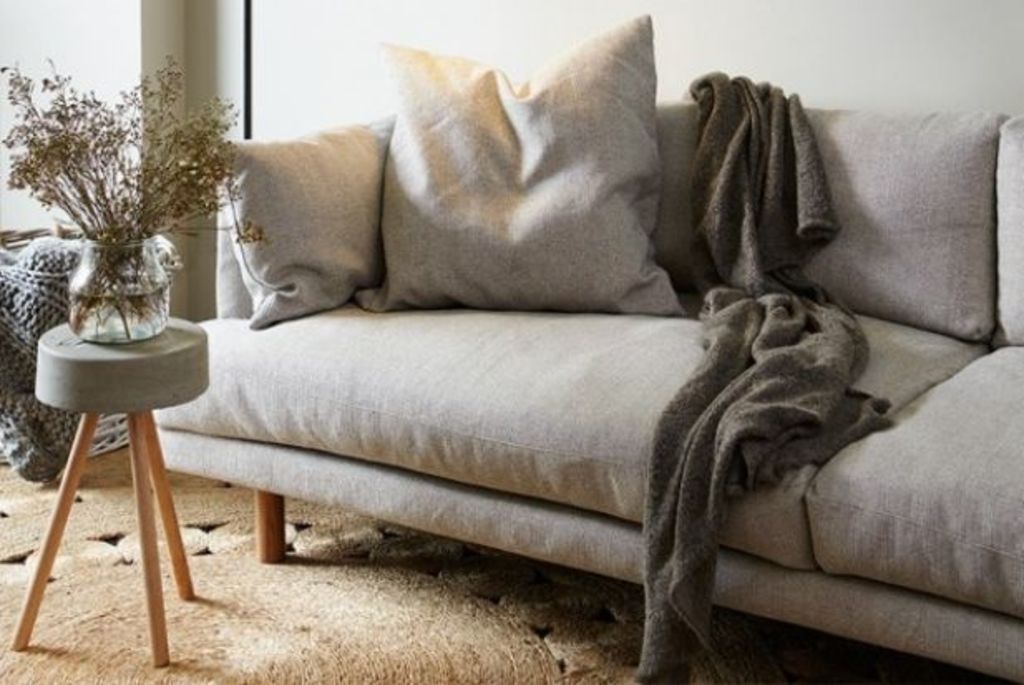Architect v building designer v interior designer: learning to navigate Australia's design landscape

Australia is a unique country given there is no legal requirement to engage a professional designer when constructing single-residential homes.
Instead, consumers are confronted with numerous options and decisions, ranging from whether or not to hire an architect, to settling on a reasonable construction fee.
“This is evident by the current proliferation of replicated, limited designed suburban buildings we see being designed and constructed,” says architect Andrew Fedorowicz from Balance Architecture.
“This is a very old conundrum for the design profession. Architect Robin Boyd railed against these concerns in his book The Australian Ugliness (1960).”
As a result, the decision of whether to employ the services of a building designer, architect or similar is very much a personal choice.
We asked industry figures to clearly define the most commonly confused industry professions, outlining their specialisms, fees and disparities.
Interior designer/interior architect
An interior architect is responsible for the design of the physical interior space itself.
“They undertake everything from design strategy, concept phase, evaluate options and developed design. In addition, they also undertake the interior design function,” says Jo Powell of 3 Pea’s Property Styling.
“They consider the walls, floors and ceilings, and plan spaces according to planned use [and] they consider elements such as spatial allocation, circulation, design of joinery, and specification of finishes, fixtures and fittings,” Tara Dennis, interior designer at TD Creative Agency.
Interior architects are capable of providing a full design service from initial concept creation, right through to construction documentation and project management.
The terms interior designer and interior architect are often used interchangeably, however, as there is jurisdiction surrounding the use of the term “architect”, a person advertising themselves as the latter must legally be registered with their state or territory’s regulatory board.
“The biggest difference [compared with an interior designer] is that an interior architect generally span across the whole scope of a design project from start to finish,” say Cushla McFadden and Chloe Matters, co-founders of interior architect firm TomMarkHenry.

Photo: Tom Mark Henry
Registration requirements for interior designers differ state to state in Australia, with the majority of states currently without a registration process.
Given the professions’ similar names, the varying levels of industry registration and regulation are often unknown to consumers.
“Having a clear system of industry registration and regulation (as currently exists in Victoria) is the first step to educating Australian consumers on whether they will need input from an interior designer or decorator for that new pet project,” says Alistair McDonald, president of the Building Designers Association of Victoria (BDAV).
“Once industry registration is introduced across the nation, public awareness of the nuances between the interior design and interior decorator professions will increase. As a result, consumers will be more informed and in a better position to decide what skills they require from their building professional.”
The fees charged by interior designers depend on the sector they are working in, the scope of works and the intended fee structure.
“For small projects, such as the design of a new joinery unit or kitchen, an interior designer may charge a flat fee of a few thousand dollars, with a scope of completing the project from preliminary design right through to completion by the build,” Dennis says.
“For larger projects, the interior designer may charge a percentage of the overall cost of construction.”
Interior decorator
An interior decorator’s role is generally to improve the look of an existing space in alignment with a client’s brief.
“An interior decorator typically holds a qualification in interior decoration (normally a diploma), and is concerned with dressing an interior with things like paint, furnishings, floor coverings, and fabrics for aesthetic purposes,” says Anna Trefely, associate of Alexander&CO.
They are not involved in structural planning, access and egress issues, or health and safety planning for occupants.
“Interior decorators providing full services as an interior designer in Victoria without the required registration and insurance requirements are in breach of the state’s building regulations,” Macdonald says.
“Interior decorators may also charge a flat fee if completing the decoration and furnishing of an entire house, or alternatively may charge hourly or daily if working within a reduced scope of a small room or specific piece,” Dennis says.

Photo: Alexander & CO
Property stylist
Property stylists are generally employed during the selling process of a home.
“With experience in the property market, stylists understand what buyers are looking for and current trends to help present your home in its best light,” says Caitlin Perry, interior designer and director of Setsquare Studio.
“This generally involves the arrangement of furnishings, accessories and the setting of scenes.”
Property stylists often work independently of their client, using furnishings and decor items hired by the client specifically to be photographed or filmed pre-sale.
“The outcomes of property stylists are usually considered to be short term only,” Powell says.
Architect
In Australia, there are three main professions associated with the design and drawing of homes – architects, building designers and draftspeople.
“In my opinion, an architect is really a specialist in design,” says Amelia Lee, architect at Undercover Architect.
“Of course they draw and deliver buildings very well too (as in, they’ll be your representative on site during construction) however, their main area of skill and expertise is in maximising design opportunities for your home, your site and your budget.”
For an architect to legally use the title of “architect” in Australia, they must be board registered. This means they’ve completed a recognised university degree (usually five to six years of study), completed a required level of on-job experience (minimum two years), passed an exam, and during annual reregistration declare they are fit to practice and are continuing their professional development.
Architect may cost more than other design consultants, however, it’s claimed their involvement yields greater returns.
“We often find that we are able to appeal to the community and authorities, developing a rapport based on our understanding of an area and our desire to achieve the best possible design and value outcome for our clients,” Richard Middleton, director at Richard Middleton Architects.
“In many cases this has led to higher sales figures than would otherwise be achieved.”
Architects also consult with a variety of other professionals from engineers, to soil testers and energy consultants on behalf of their client.
“A good architect will handle the building approvals and development applications,” says Janet Bailey of Bailey Retail Design.
“If you use a draftsperson, those applications may be done by the builder…Basically the more you pay for the services, the more you would expect that person/company to handle.”
There are a number of different ways architects can choose to charge for their work, from a percentage of a project’s value (generally 10 per cent of the total build cost), fees based on time, and fixed rate fees.

Photo: Tom Mark Henry
Building designer
Building designers’ roots emanate from technical drafting skills. Once considered draftspeople, their role in the industry has since evolved.
A building designer is not an architect, but provides similar professional design and documentation services in residential and commercial construction.
Their work includes sketching building plans, preparing documentation, calculating labour and material requirements, building site visits and examining relevant codes.
Whether or not a building designer has to be formally registered depends on their state or territory.
“New South Wales, unlike Queensland, Victoria and Tasmania, does not have any formal registration for building designers,” says Aaron Wailes, licensed building designer from Aaron Wailes Building Design.
“In some states, building designers can do similar projects to architects, and in other states, their work is limited. You could liken it to not knowing the road rules when driving between states – best check the rules before you start driving.”
To be registered as a building designer in Victoria, it’s required to complete an Advanced Diploma in Building Design (Architectural) and attain at least one year of professional experience.
The difference in building designers’ qualifications between states is often a source of confusion for consumers and industry members alike.
“The adoption of a national licensing scheme for building designers would be a monumental development for the industry and one that could help take the industry to the next level in Australia,” Macdonald says.
“Securing national registration and licensing for building designers is crucial to ensuring the profession continues to go from strength to strength in the years to come.”
According to Wailes, a formally licensed building designer charges between 2.5 and eight per cent of a project’s construction costs depending on the scope of services and complexity of the project.
Draftsperson
Draftspeople have either studied at TAFE or learned on the job how to draw (document) buildings.
“Draftspeople are largely taught how to draw and understand the construction of buildings so they can represent them accurately in their documentation,” Lee says.
“Of course, as part of drawing, they are often designing as well (and if they’ve studied at TAFE, they have usually done some design study also as part of this).”
A draftsperson generally charges an amount per square metre of a home.

Photo: Alexander & CO
We recommend
We thought you might like
States
Capital Cities
Capital Cities - Rentals
Popular Areas
Allhomes
More







